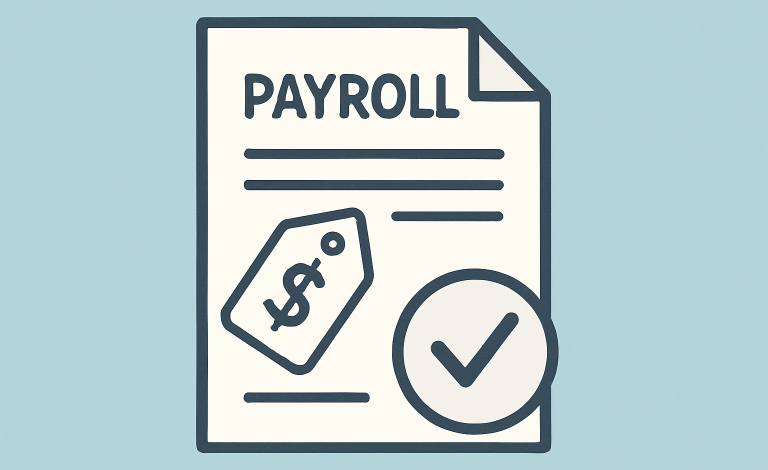Why Clear Payroll Pricing Makes Running a Small Business Easier

What Payroll Pricing Transparency Means for Small Businesses
Small businesses routinely face the challenge of managing tight financial margins while ensuring compliance with payroll regulations. The process of selecting payroll and HR solutions becomes significantly easier when pricing transparency is available. Instead of navigating hidden charges and complicated invoices, business owners gain a clear understanding of what services they’re paying for—and when. This clarity empowers effective budgeting, prevents unexpected costs, and facilitates business planning.
For a comprehensive look at transparency in the industry, pricing transparency explained gives detailed insights into how transparent pricing helps small businesses make more informed decisions. Knowing what expenses lie ahead allows owners to allocate resources effectively, reducing the stress of administrative surprises each payroll cycle.
Transparent payroll pricing is about more than just easy-to-read invoices—it’s about building trust and establishing a baseline for long-term provider relationships. When payroll providers openly list their pricing and services, it validates their commitment to honest business practices and fair dealings. This trust is crucial for smaller organizations, where managing overhead costs effectively can significantly impact profitability. Clarity around costs also enables straightforward comparison among payroll service providers. Rather than being swayed by flashy introductory offers, business owners can weigh the actual long-term value of one provider over another, based solely on transparent information.
Common Challenges Faced with Payroll and HR Costs
One major pain point among small business employers is the uncertain and sometimes unpredictable nature of payroll-related charges. Unexpected payroll expenses and variable monthly fees frequently cause financial headaches for owners. Many platforms advertise a simple, subscription-based model, but later introduce additional charges for off-cycle payroll runs, tax filings, or year-end forms. Lack of transparency can make it nearly impossible to forecast budget requirements, particularly for seasonal businesses or those anticipating rapid growth. When invoices don’t align with service agreements, it diverts valuable administrative time to resolving billing disputes, detracting from attention to core business activities. Small business leaders must consistently monitor their HR and payroll expenses, remaining vigilant to fees that can erode confidence in their providers.
Uncovering Hidden Fees in Payroll Solutions
Payroll and HR solutions are often marketed with simple, attractive base prices, but many of the actual costs only appear in the fine print. After signing up, business owners may encounter charges they didn’t anticipate—such as fees for processing wage garnishments, producing or mailing year-end tax documents, or implementing new compliance requirements. These add-ons can create a steady stream of unplanned expenses that quickly add up over the year.
For small businesses operating with tight budgets, these hidden costs can significantly disrupt cash flow and complicate financial planning. What may have seemed like an affordable service can quickly become burdensome, creating strain on monthly budgets and limiting resources available for other business needs. Over time, these surprises can erode trust in the payroll provider, leaving business leaders frustrated and uncertain about the actual value they are receiving.
When this happens, companies may feel compelled to switch vendors in search of a more transparent solution. Unfortunately, changing providers often introduces additional challenges, including operational disruptions, staff retraining, and the potential for payroll errors during the transition. The result is not only financial strain but also a negative impact on employee satisfaction—something no business can afford to overlook.
Benefits of Clear Pricing Models
Transparent pricing models eliminate much of the uncertainty that comes with managing payroll services. When costs are clearly outlined, businesses gain improved budgeting accuracy and financial forecasting. Leaders can allocate funds with confidence, knowing they won’t be caught off guard by surprise fees that surface months later.
Beyond financial clarity, transparent pricing also reduces time spent on administrative tasks such as reconciling invoices or disputing unexpected charges. This frees up business owners and HR staff to focus on strategic priorities, such as employee development and business growth, rather than wasting hours chasing down billing issues. The result is greater operational efficiency and peace of mind.
Perhaps most importantly, transparent pricing strengthens the trust between a business and its payroll provider. When companies know precisely what they are paying for, they can confidently compare offerings across multiple vendors and select the one that best fits their needs. For small businesses, this ability to make an apples-to-apples comparison ensures that their chosen solution supports long-term growth without hidden costs lurking in the background.
Key Steps to Improve Cost Visibility
For businesses to avoid the pitfalls of hidden fees, it’s essential to take proactive measures when evaluating payroll providers. The first step is requesting a complete breakdown of all current and potential charges before signing any agreement. This should include fees tied to compliance, reporting, and employee changes, as these areas are common sources of hidden costs.
Next, businesses should compare at least three different providers, focusing on transparency rather than simply the lowest base price. While one provider may advertise a lower monthly rate, the total cost could end up being higher once all additional fees are taken into account. Taking the time to analyze and compare in detail can prevent future surprises.
It’s also wise to clarify how fees may change as the business grows or contracts. For example, will costs rise with every new hire, or decrease if the workforce shrinks? Additionally, seeking reviews and testimonials from other small business clients offers real-world insight into billing practices and the provider’s overall reliability. By following these steps, companies can establish a payroll system that fosters stability, mitigates unexpected financial strain, and ensures smoother, long-term operations.
Questions Small Businesses Should Ask Payroll Providers
- What exactly is included in the base service package, and what counts as an additional charge?
- Are there annual, seasonal, or off-cycle fees that I might encounter during the year?
- How frequently are rates subject to review, and what triggers a pricing increase?
- Does the provider support compliance-related filings, and are those services billed separately or included?
Clarifying these questions when evaluating a provider will ensure that there are no unpleasant surprises and will help you build a transparent and reliable partnership for the long term.
Conclusion: Toward a More Predictable Payroll Future
For small businesses, transparent payroll pricing offers a pathway to sustainable growth and operational simplicity. The days of deciphering cryptic invoices and chasing down unexplained charges are fading as providers, regulators, and consumers all champion for financial clarity. By making visibility and transparency non-negotiable, small businesses can spend less time worrying about costs and more time investing in their teams. As momentum builds in the industry, prioritizing transparent payroll pricing will help foster trust, strengthen business relationships, and lay a foundation for future success.



